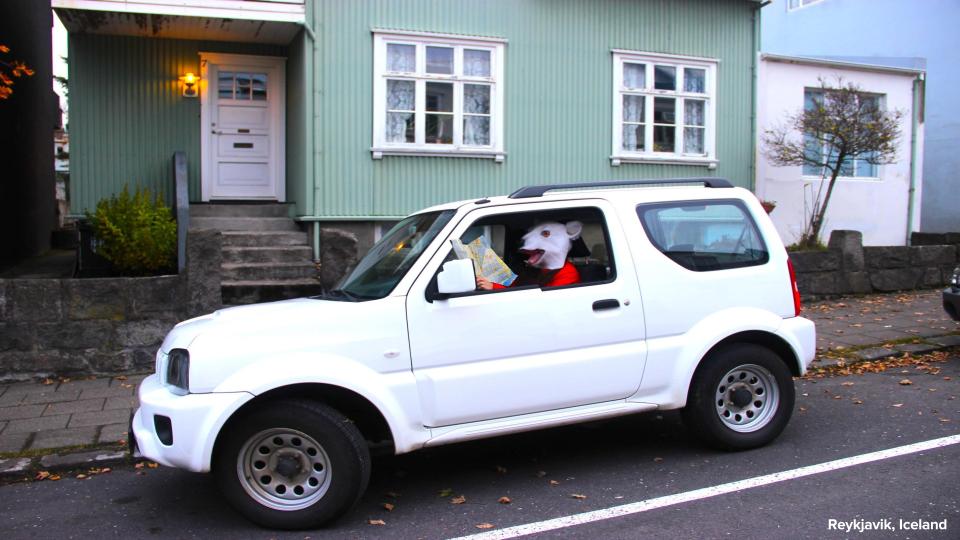
Are you planning to use your smartphone’s navigation system on an upcoming trip to Europe and can’t decide whether to rely on offline maps? This guide is for you! It walks you through the difference between online and offline maps, the pros and cons of each and whether using offline maps in Europe is for you!
How Does Using Offline Maps Actually Work?
Travelers to Europe have traditionally needed large amounts of data if they wanted to rely on Google Maps or some other type of online mapping app. More recently, offline capabilities are being added as a feature to existing apps and new apps dedicated to offline maps are being created. Offline maps operate similarly to GPS in your car. You download the map and the app then uses GPS, which is free and available when you’re offline. Click here to learn about how GPS works on your smartphone.
Using Online Maps in Europe
Each time you travel someplace new, your phone has to use more cellular data to cache the map and routes. As a general rule, you will use more data if you:
- Are going long distances, like Lisbon to Porto in Portugal
- There are lots of geographic features (think: the crowded buildings and monuments of Rome)
- Are not on a highway (think the backroads of the Loire Valley in France)
- Use turn-by-turn directions (very helpful in Madeira, Portugal!)
- View the map in satellite form (you will also use significantly more data if using with turn-by-turn directions!)
As you cover more ground, your phone will cache these locations and routes, and more memory will be used. So it’s a trade off. If you want to free up memory, you should clear your Google Maps cache, but then you’ll use more data to re-cache the route.
It’s also hard to estimate how much data and memory you’ll use when navigating because many factors affect data use. As an experiment, we used turn-by-turn directions on the same 50 mile drive with light traffic. The first 10 miles were in the city then it was less densely populated. When we put in the new destination, we used 34 MB of data but when the route had already cached, we only used 9MB.
So if your goal is saving data, you should pre-calculate your route while still on wifi in your hotel and stop using turn-by-turn directions. Or download the map offline as discussed below. If you’re trying to save memory, clear your map app’s cache.
TIP: We highly recommend getting an extra battery charger like this one, which can take you to 0% to 100% charge very quickly. And if you do, consider bringing another adapter, especially if you have more than 3 things to charge.
Using Offline Maps in Europe
Recently, there has been an influx of apps offering offline capabilities, including Google Maps, which began offering the functionality to iPhone users in late 2015. The apps use GPS to pinpoint your location and many offer turn-by-turn directions.
One reason not to use offline maps is that they take up a lot of memory. A map of San Francisco in Google Maps takes up 225MB of space to download. A more sparse area of the same size may take less space. If you don’t have space, one workaround is downloading the map to an SD card. But you’ll need an SD card reader and be able plug it into your smartphone when you need directions. Another disadvantage to offline maps is that you will not be able to see live traffic or updates to the map since you last downloaded it. This makes using offline maps in Europe less valuable if you’ll be driving more congested areas like Lisbon or Paris.
TIP: Even using offline maps, unless cellular data is not turned off, your phone still uses small amounts of cellular data for map updates and traffic information. We’ve found that Google Maps will also sometimes use cellular data to download a whole new map area, even when we’ve already downloaded that area offline. So if data is a concern, switch cellular data off.
To summarize the difference between using offline maps and online maps in Europe, we’ve created the chart below.
Comparing Offline and Online Maps: Data, Memory, Battery and Live Updates
| Using data/step by step directions | Using Data/ GPS only (no directions) | Offline/Step by step directions | Offline/GPS only (no directions) | |
|---|---|---|---|---|
| Memory | Low | Low | High | High |
| Data use | High | Low if your phone has already stored directions – Medium if not | Zero | Zero |
| Battery use | High | Med | High | Med |
| Availability of live updates | Available | Available | NO | NO |
Making Your Decision for Offline Maps in Europe
Whether to switch to using offline maps in Europe is generally a question of convenience v. price. It’s generally more convenient to use a map online, but it’s costlier if you’re paying a lot for data. But other factors can affect your choice, such as if there’s bad cell service or you don’t have memory to download a map directly to your phone. Generally, though, go with offline maps if you want to save some dough and choose online maps if you want to minimize a potential headache.
Do you want to learn more about using your cell phone in Europe, including 14 tips for saving data when traveling, how to download offline maps, what’s the best offline map app, and whether you should rely on your smartphone, a portable GPS device or in-car GPS? Then click here for links to all these articles.
Or get the guide in one easy to read PDF. We just need your email below. You may also like one of our awesome itineraries for Europe, including France, Germany, Budapest, Iceland, Italy, Portugal, Spain or the United Kingdom.
At Travel Honey, we find savvy travelers and share their trip recommendations with you through awesome guides and interactive maps. We provide all the information you need in one place, give you trip advice you can trust, simplify logistics, and save you time.


